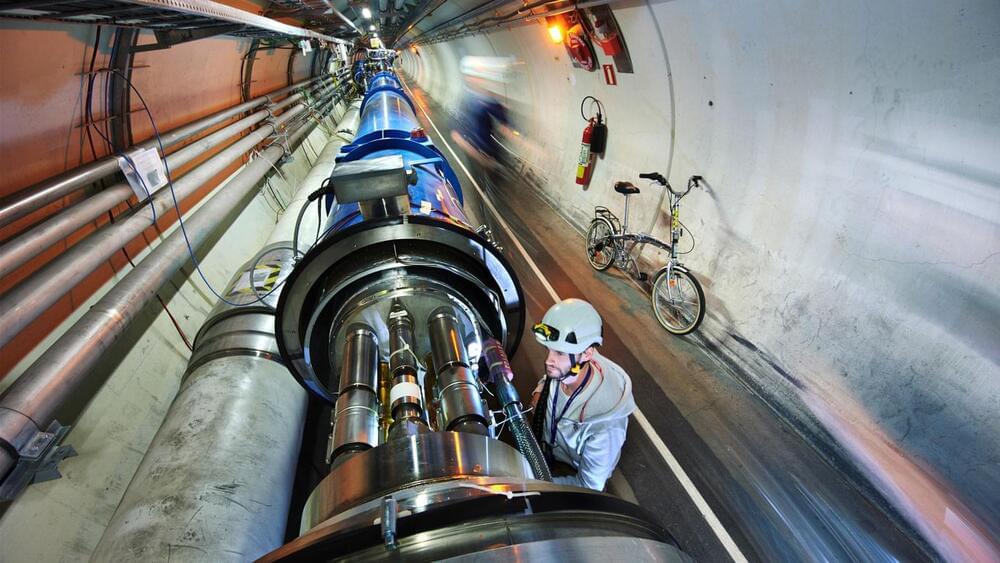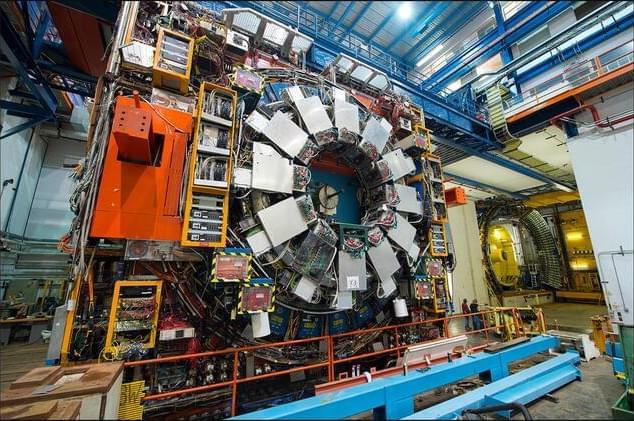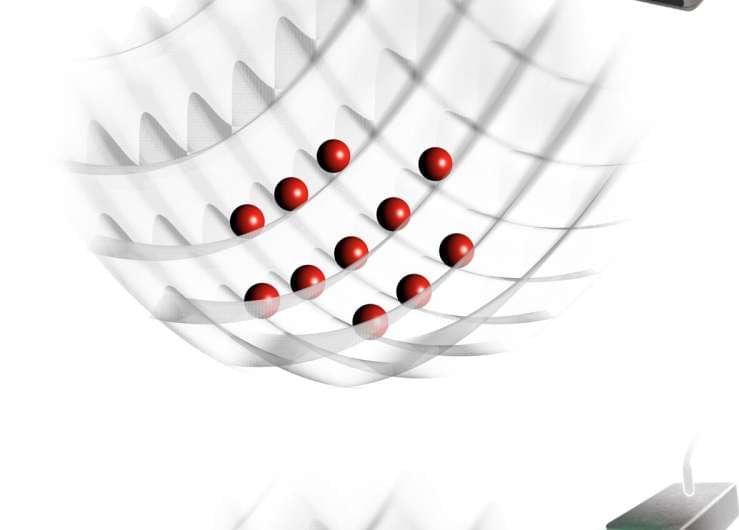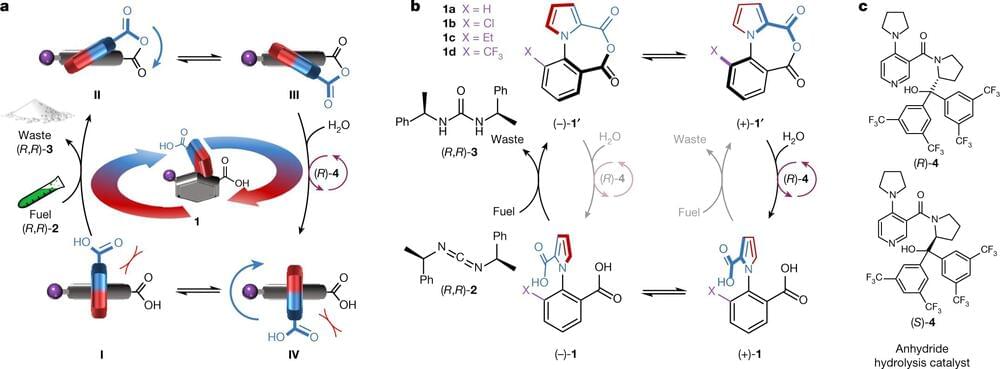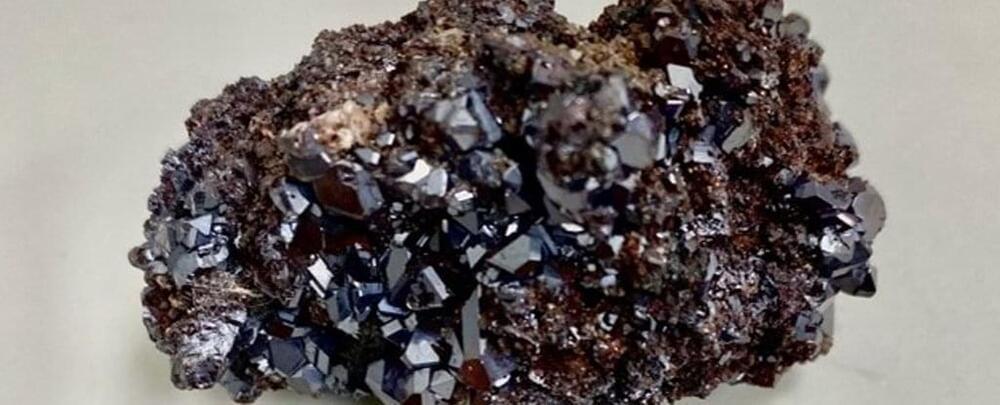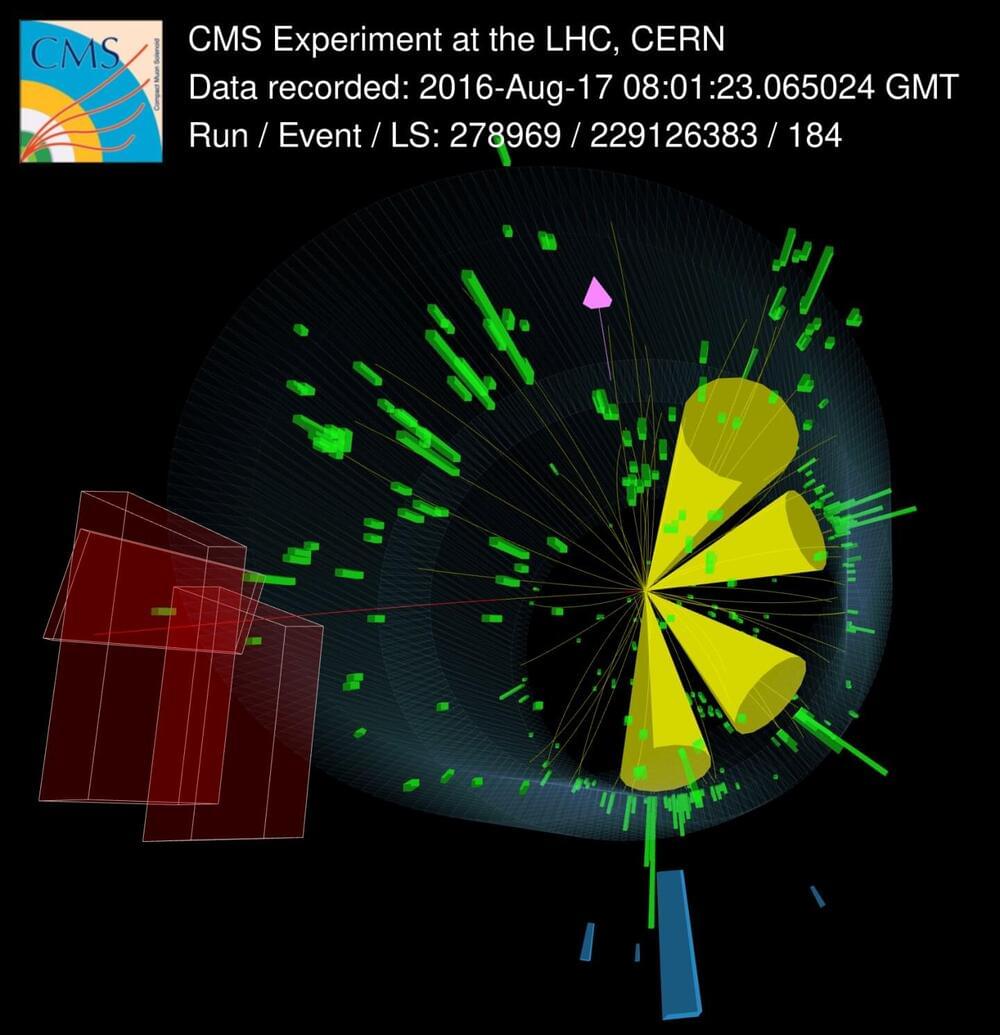Archive for the ‘particle physics’ category: Page 276
Apr 22, 2022
The Large Hadron Collider has restarted after 3 years of upgrades
Posted by Genevieve Klien in categories: cosmology, particle physics
Scientists shut down the particle accelerator in 2018 to allow for upgrades (SN: 12/3/18). On April 22, protons once again careened around the 27-kilometer-long ring of the Large Hadron Collider, or LHC, located at the particle physics laboratory CERN in Geneva.
The LHC is coming out of hibernation gradually. Researchers started the accelerator’s proton beams out at relatively low energy, but will ramp up to slam protons together at a planned record-high energy of 13.6 trillion electron volts. Previously, LHC collisions reached 13 trillion electron volts. Likewise, the beams are starting out wimpy, with relatively few protons, but will build to higher intensity. And when fully up to speed, the upgraded accelerator will pump out proton collisions more quickly than in previous runs. Experiments at the LHC will start taking data this summer.
Physicists will use this data to further characterize the Higgs boson, the particle discovered at the LHC in 2012 that reveals the source of mass for elementary particles (SN: 7/4/12). And researchers will be keeping an eye out for new particles or anything else that clashes with the standard model, the theory of the known particles and their interactions. For example, researchers will continue the hunt for dark matter, a mysterious substance that so far can be observed only by its gravitational effects on the cosmos (SN: 10/25/16).
Apr 22, 2022
Mass of rare particle may conflict with ‘standard model,’ signaling new physics
Posted by Shubham Ghosh Roy in categories: computing, particle physics
New measurement for W boson is at odds with previous values.
AMD has cut prices on its Ryzen 5,000 CPUs. In some cases, they’ve trimmed price by as much as 25 percent.
Apr 22, 2022
Experimental characterisation of nonlocal photon superfluids
Posted by Quinn Sena in categories: computing, particle physics, quantum physics
Circa 2015 This is basically amazing leading to speeds in a computer basically infinite.
Quantum gases of atoms and exciton-polaritons are nowadays a well established theoretical and experimental tool for fundamental studies of quantum many-body physics and suggest promising applications to quantum computing. Given their technological complexity, it is of paramount interest to devise other systems where such quantum many-body physics can be investigated at a lesser technological expense. Here we examine a relatively well-known system of laser light propagating through thermo-optical defocusing media: based on a hydrodynamical description of light as a quantum fluid of interacting photons, we investigate such systems as a valid, room temperature alternative to atomic or exciton-polariton condensates for studies of many-body physics.
Apr 22, 2022
Study introduces loss-free matter-wave polaritons in an optical lattice system
Posted by Saúl Morales Rodriguéz in categories: particle physics, quantum physics
Polaritons are quasiparticles that are formed when photons couple strongly with excitations of matter. These quasi-particles, which are half-light and half-matter, underpin the functioning of a wide range of emergent photonic quantum systems, including semiconductor-based nanophotonic devices and circuit quantum electrodynamic systems.
Researchers at Stony Brook University have recently introduced a novel polariton system in which the matter excitation is replaced by an atom in an optical lattice and the photon by an atomic matter wave. This system, introduced in a paper published in Nature Physics, results in matter-wave polaritons, and could open interesting possibilities for the study of polaritonic quantum matter.
“A few years ago, we became interested in the idea of using ultracold atoms to simulate the dynamical behavior of quantum emitters,” Dr. Dominik Schneble, head of the team of researchers who carried out the study, told Phys.org. “It turns out that it is possible to build an artificial atom that spontaneously emits matter waves, in much the same way as an atom spontaneously emits a photon (as described by the so-called Weisskopf-Wigner model).”
Apr 21, 2022
A biological motor that consumes chiral fuel drives rotation in one direction around a single covalent bond
Posted by Jose Ruben Rodriguez Fuentes in categories: biological, chemistry, internet, nanotechnology, particle physics
Bart Blommaertsif it helps. But don’t cut internet cables with that thing!!
Andreas StürmerFinally. Is it going to be a rail or car tunnel?
Eric KlienAdmin.
Apr 21, 2022
Infrared Multiple Photon Dissociation Spectroscopy Confirms Reversible Water Activation in Mn+(H2O)n, n ≤ 8
Posted by Shubham Ghosh Roy in categories: chemistry, particle physics, quantum physics
Ron FriedmanThink outside the box. Most people don’t need a car for the sake of having a car.
Most people need a comfortable, quick and cheap way of going from A to B. So, Robotaxi could be the ideal solution for most people most of the time.… See more.
Jerry AndersonProbably not, because new batteries that contain other elements, I think they are saying Sulfur-Lithium batteries are more efficient last longer, and don’t require recharging as often… There are bound to be other breakthroughs.
4 Replies.
Apr 20, 2022
Voyager: The first launch of a radioisotope power system (RPS) by the United States 60 years ago in June 1961 led to decades of historic RPS-powered missions by NASA
Posted by Alan Jurisson in categories: particle physics, space
In the sparse collection of atoms that fills interstellar space, Voyager 1 has measured a long-lasting series of waves where it previously only detected sporadic bursts.
Apr 19, 2022
An Ancient Namibian Stone Could Hold The Key to Unlocking Quantum Computers
Posted by Saúl Morales Rodriguéz in categories: computing, particle physics, quantum physics
One of the ways we can fully realize the potential of quantum computers is by basing them on both light and matter – this way, information can be stored and processed, but also travel at the speed of light.
Scientists have just taken a step closer to this goal, by successfully producing the largest hybrid particles of light and matter ever created.
These quasiparticles, known as Rydberg polaritons, were made with the help of a piece of stone containing cuprous oxide (Cu2O) crystals from an ancient deposit in Namibia, one of the few places in the world where cuprous oxide has been found in gemstone quality.
Apr 19, 2022
Research team measures the mass of the top quark with unparalleled accuracy
Posted by Saúl Morales Rodriguéz in categories: mathematics, particle physics, quantum physics
The CMS collaboration at the Large Hadron Collider (LHC) has performed the most accurate ever measurement of the mass of the top quark—the heaviest known elementary particle. The latest CMS result estimates the value of the top-quark mass with an accuracy of about 0.22%. The substantial gain in accuracy comes from new analysis methods and improved procedures to consistently and simultaneously treat different uncertainties in the measurement.
The precise knowledge of the top-quark mass is of paramount importance to understand our world at the smallest scale. Knowing this heaviest elementary particle as intimately as possible is crucial because it allows testing of the internal consistency of the mathematical description of all elementary particles, called the Standard Model.
For example, if the masses of the W boson and Higgs boson are known accurately, the top-quark mass can be predicted by the Standard Model. Likewise, using the top-quark and Higgs-boson masses, the W-boson mass can be predicted. Interestingly, despite much progress, the theoretical-physics definition of mass, which has to do with the effect of quantum-physics corrections, is still tough to pin down for the top quark.

